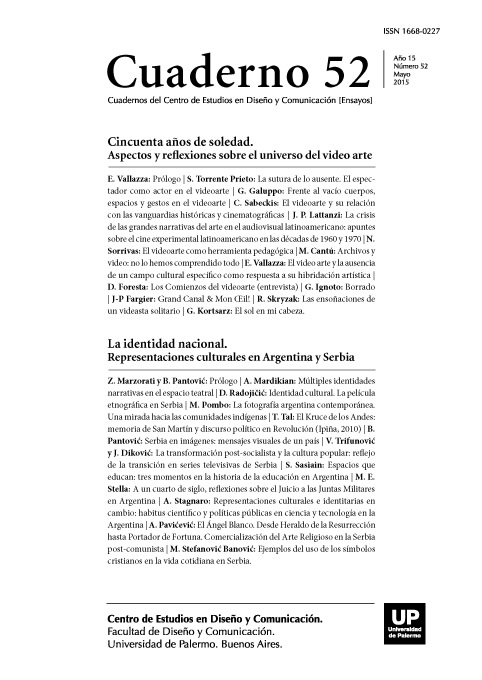Borrado
Abstract
The text of Georges Ignoto is the story of a life that goes from the experience
at the Vincennes University, the center of political dissent and intellectual vanguard of the
Paris of post-68, until today, in the continuity of a career devoted entirely to video art.
This chronicle of a “stain” tells the story of what was the video art in France in the 80s/90s
and its subsequent marginalization in favor of a video that best suits the needs of the
contemporary art market. The taste of freedom, the constant search for a new writting,
a legacy of the vanguards of the 20s reinterpreted at the glare of the electronic image,
compose the subject.
The video was a collective adventure. A great adventure, generous and insolent. Why it
would last?
References
Belland, K. (2005). Le Vent de Vincennes. Producciones VLR. Disponible en: http://www.archivesvidéo.univ-paris8.fr
Bezzan, C. (s/f). La Création vidéo en Belgique, en L’art même n°9, Ministère de la Communauté française de Belgique.
Bourges, A. (2008). Contre la télévision, tout contre. Saint-Etienne: Editions de la Cité du Design.
Boyle, D. (1997). Subject to change. Guerrilla Television revisited. New York: Oxford University Press.
Faucherre, R. (mai 1968 - janvier 1969). Préhistoire de l’Université de Saint-Denis: la naissance de Vincennes. Disponible en: http://www.ipt.univ-paris8.fr/hist/
Le Monde (del 10-11 de noviembre de 1968). Citado por Rémi Faucherre en su Tesis de Maestría en Historia Atypie-Utopie, Vincennes, naissance d’une université, Mai 1968-janvier 1969. Tesis realizada bajo la dirección de Michelle Perrot del departamento de Geografía - Historia y Ciencias Sociales de la Universidad Paris 7 - Diderot, 1991-92.
Nietzsche, F. W. (1872). Nacimiento de la Tragedia. Leipzig: E. W. Fritzsch.
Robveille, Y. Vincennes, roman noir Université rouge. Producción de Zarafa Films. Disponible en: www.archives-vidéo.univ-paris8.fr
Los autores/as que publiquen en esta revista ceden los derechos de autor y de publicación a "Cuadernos del Centro de Estudios de Diseño y Comunicación", Aceptando el registro de su trabajo bajo una licencia de atribución de Creative Commons, que permite a terceros utilizar lo publicado siempre que de el crédito pertinente a los autores y a esta revista.


